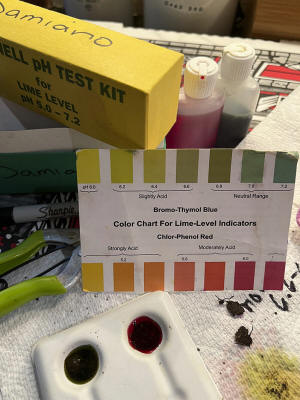Spring's official start is nearly here and there's work to do in the
garden. A checklist
[March 12, 2025]
By JESSICA DAMIANO
OK, gardeners — it's time to dig in! With about a week to go before the
official start of spring, we’ve got work to do.
A checklist:
Soil
First, test your soil’s pH level. Each plant thrives best within a
specific range, and nutrient absorption will be impaired if the reading
falls outside that range. If warranted, amend the soil with ground
limestone to raise its pH or elemental sulfur to lower it. Test kits are
readily available and reasonably priced.
Trees
Fertilize trees with a slow-release product.
Get pruning. Most deciduous trees and shrubs (those that lose their
leaves in autumn), including fruit trees, should be pruned before they
emerge from dormancy. But hold off on pruning spring bloomers until just
after their flowers fade.
Similarly, relocate trees and shrubs while they’re still dormant. Be
sure to dig up as much of their root systems as possible and replant
into a hole that’s twice as wide but exactly as deep.
Flowers
If you ordered bare-root roses, clear beds now so you can get them into
the ground as soon as they arrive lest they rot while waiting for you to
get your act together. The same goes for asparagus crowns and onions.
If your roses were infected with mildew or the dreaded black spot
disease last year, remove and replace the mulch around them to avoid a
recurrence.
If fall-blooming perennials are getting crowded, dig up and divide them
after they poke out of the ground. Plant the divisions elsewhere or
share them with a gardening friend. Spring and summer bloomers should be
divided in fall.
Early-season vegetables
It’s time to order seed potatoes. Get them into the ground two to three
weeks before the last expected frost in your area, which is typically
indicated by the greening of dormant grass.
Plant peas, radish, lettuce, chard and spinach as soon as the soil
temperature reaches 45 degrees. (Soil thermometers are widely available
and nominally priced). Soak pea seeds overnight in warm water to improve
germination speed and rates, then treat with a nitrogen-fixing inoculant
to provide an additional boost, particularly if peas are new to the bed.
[to top of second column]
|

This Aug. 12, 2023, image provided by Jessica Damiano shows a soil
pH test kit on Long Island, N.Y. (Jessica Damiano via AP)
 The cool-weather crops will struggle
in hot weather, so be prepared to protect plants with shade cloth if
you expect temperatures above 80 degrees F within 60 days of sowing.
Indoors, start seeds of annuals, tomatoes, peppers and eggplant,
observing the lead times listed on their packages.
Care for houseplants
Repot houseplants into the next-size pot, no more than 2 inches
wider than their current container, and fertilize. If you’re
planning to move them outside for the summer, they’ll need to be
acclimated: Wait until the danger of frost has passed, then
gradually increase their time outdoors by one hour each day for a
week.
Practice patience
Resist the urge to mulch beds and borders until things really heat
up. Otherwise, you’ll risk trapping the cold in the ground, which
may delay the re-emergence of bulbs and perennials and the leafing
out of dormant trees and shrubs.
You can fill planters with pansies while you wait.
___
Jessica Damiano writes weekly gardening columns for the AP and
publishes the award-winning Weekly Dirt Newsletter. You can sign up
here for weekly gardening tips and advice.
All contents © copyright 2025 Associated Press. All rights reserved |